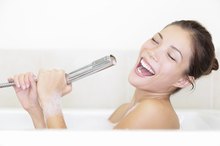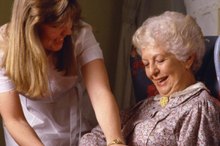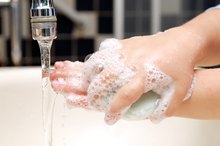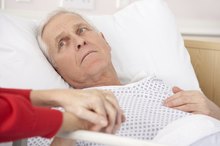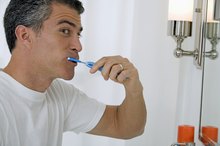What does fact checked mean?
At Healthfully, we strive to deliver objective content that is accurate and up-to-date. Our team periodically reviews articles in order to ensure content quality. The sources cited below consist of evidence from peer-reviewed journals, prominent medical organizations, academic associations, and government data.
The information contained on this site is for informational purposes only, and should not be used as a substitute for the advice of a professional health care provider. Please check with the appropriate physician regarding health questions and concerns. Although we strive to deliver accurate and up-to-date information, no guarantee to that effect is made.
Why Is Personal Hygiene So Important?
Personal hygiene refers to the comprehensive cleaning of and caring for your body 3. Maintaining good personal hygiene includes bathing, washing your hands, brushing your teeth and wearing clean clothing. It also includes making safe and healthy decisions when interacting with others. Implementing good personal hygiene practices has both health and social benefits 1.
Health Benefits
Keeping your body clean is vital in combating and preventing illness -- both for yourself and for those around you. Washing your hands can prevent the spread of germs from one person to another or from one part of your body to another. Flossing and brushing your teeth can reduce the likelihood of oral and other diseases.
Social Benefits
Definition of Personal Hygiene
Learn More
In many cultures, poor personal hygiene is considered offensive or a sign of illness. Caring for your body regularly can reduce body odor and improve your personal appearance, subsequently improving others' perceptions of you. This is particularly important in situations in which proper etiquette is expected or required, such as at work or school. Good personal hygiene is also helpful in improving your own self-image. Bad breath, body odor and an unkempt appearance, for example, are often considered undesirable and can give a bad first impression to peers, acquaintances and potential mates.
Types
Personal hygiene covers a wide variety of separate actions, such as shaving, bathing and wound care. According to Mayo Clinic, hand washing should occur before preparing food and treating wounds as well as after using the toilet or touching an animal 2. Other situations that call for hand washing include eating and handling germ-infested items such as diapers and Kleenex.
Oral hygiene---or the process of caring for the teeth and gums---is vital for optimal health and attractiveness. Regular face- and hair-washing, application of deodorant, and the use of soap and feminine hygiene products are other important aspects of personal hygiene to consider.
- Personal hygiene covers a wide variety of separate actions, such as shaving, bathing and wound care.
- According to Mayo Clinic, hand washing should occur before preparing food and treating wounds as well as after using the toilet or touching an animal 2.
Misconceptions
Cleanliness & Personal Hygiene
Learn More
While many items are marketed as personal hygiene products, some have little effect on actual cleanliness. Perfume, cologne, hairspray and cosmetic products such as makeup do not play a role in maintaining hygiene and should be considered optional products tied to grooming.
Challenges
Elderly people and those with mental impairment may require help in attending to personal hygiene needs. To maintain a sense of independence and dignity, disabled and elderly people should strive to meet as many of their own personal hygiene needs as possible, according to the Pennsylvania Department of Public Welfare.
Other factors that can influence hygiene standards include poverty, ignorance of proper hygiene methods and restricted lifestyles such as military service or incarceration. Learning about the consequences of poor hygiene early on is an excellent way to establish proper habits in adulthood.
- **Elderly people and those with mental impairment may require help in attending to personal hygiene needs.
- ** Other factors that can influence hygiene standards include poverty, ignorance of proper hygiene methods and restricted lifestyles such as military service or incarceration.
- Personal hygiene covers a wide variety of separate actions, such as shaving, bathing and wound care.
- Perfume, cologne, hairspray and cosmetic products such as makeup do not play a role in maintaining hygiene and should be considered optional products tied to grooming.
Related Articles
References
- Better Health Channel: Personal Hygiene
- Mayo Clinic: Hand-washing: Do's and don'ts
- CDC: Body, Facial, and Dental Hygiene
- Jelic S, Cunningham JA, Factor P. Clinical Review: Airway Hygiene in the Intensive Care Unit. Crit Care. 2008;12(2):209. doi:10.1186/cc6830
- Kumara P, Yimam W, B A, Getachew Y, A S. Practice on pulmonary hygiene and associated factors among health professionals working in two government hospitals at Amhara, Ethiopia. International Journal of Medical and Health Research. 2017;3(10):40-43.
- Aaron SD. Mucolytics for COPD: negotiating a slippery slope towards proof of efficacy. Eur Respir J. 2017;50(4). doi:10.1183/13993003.01465-2017
- Leelarungrayub J, Eungpinichpong W, Klaphajone J, Prasannarong M, Boontha K. Effects of manual percussion during postural drainage on lung volumes and metabolic status in healthy subjects. J Bodyw Mov Ther. 2016 Apr;20(2):356-63. doi:10.1016/j.jbmt.2015.11.002. Epub 2015 Nov 10.
- Osadnik, C., McDonald, C., Jones, A., and A. Holland. Airway Clearance Techniques for Chronic Obstructive Pulmonary Disease. Cochrane Database of Systematic Reviews. 2012. (3):CD008328.
- Puhan, M., Gimeno-Santos, E., Cates, C., and T. Troosters. Pulmonary Rehabilitation Following Exacerbations of Chronic Obstructive Pulmonary Disease. Cochrane Database of Systematic Reviews. 2016. 12:CD005305.
- Lee, A., Burge, A., and A. Holland. Airway Clearance Techniques for Bronchiectasis. Cochrane Database of Systematic Reviews. 2015. (11):CD008351.
- Spapen, H., De Regt, J., and P. Honore. Chest Physiotherapy in Mechanically Ventilated Patients without Pneumonia – A Narrative Review. Journal of Thoracic Diseases. 2017. 9(1):E44-E49.
Writer Bio
Alison Datko is a professional editor with experience as a journalist, writer and blogger. She contributes to a variety of print and online publications, specializing in music, food, art, fashion and culture.

